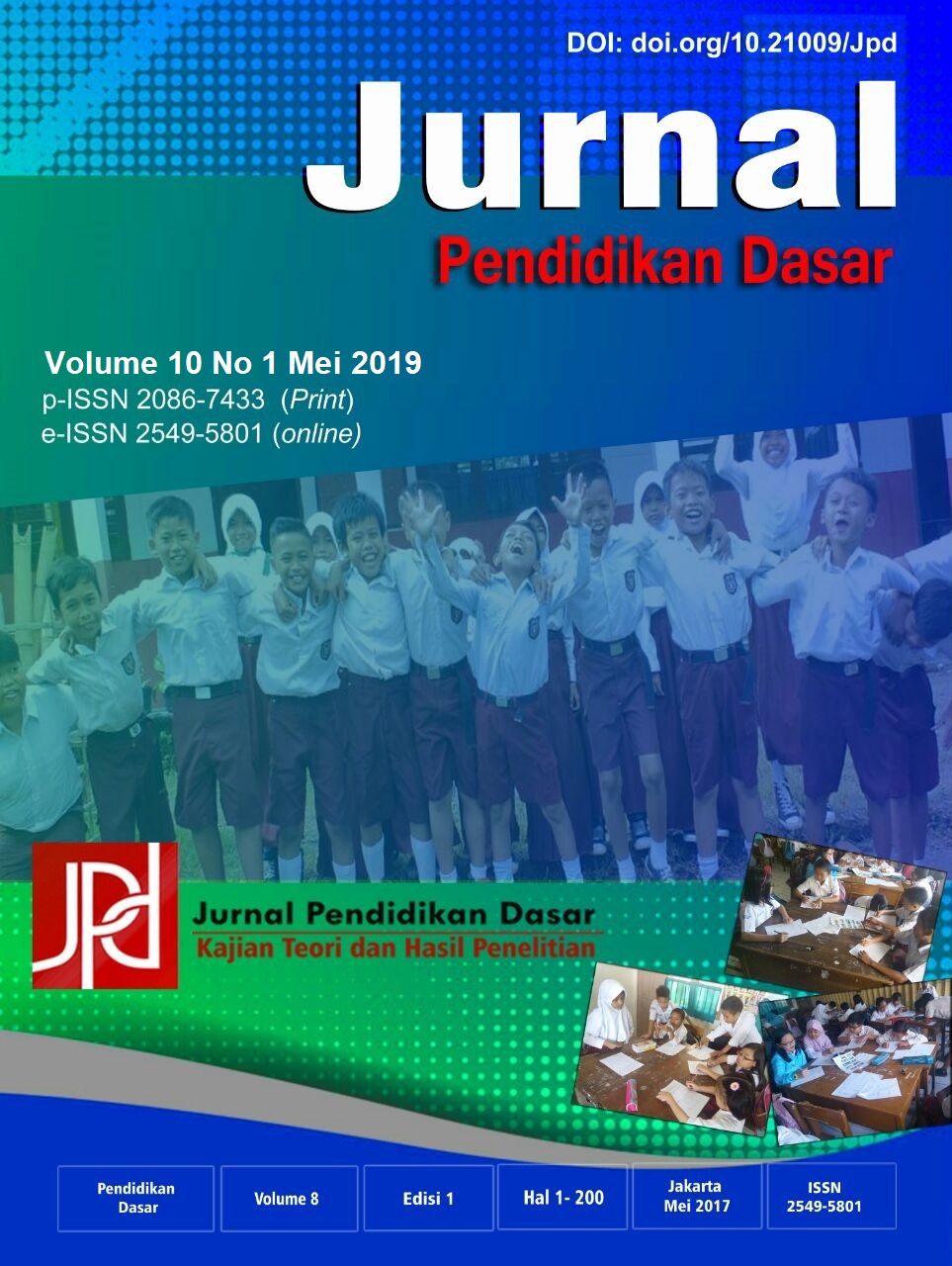PENGEMBANGAN LKPD BERBASIS PROBLEM BASED LEARNING PADA MATA PELAJARAN IPA MATERI GAYA
DOI:
https://doi.org/10.21009/jpd.v10i1.11183Keywords:
LKPD, Problem Based Learning, IPA, PengembanganAbstract
In learning activities, learning objectives can be achieved if students are active in learning activities. The form of activeness of learners in learning is seen from how he expresses opinions, responsibilities, and involvement in learning groups. Therefore, teaching materials are needed that can make students active, as a tool in the learning process and can be used as a learning resource. One of them is the Student Worksheet (LKPD). However, the LKPD circulating in schools contains more emphasis on questions and filling in questions without explaining how the answers to these questions are obtained. Therefore, it is necessary to develop an LKPD that aims to find out the stages in making LKPD based on Problem Based Learning in style material in grade IV elementary school, to determine the feasibility of LKPD to be used as teaching material, and to find out students' responses to LKPD based on Problem Based Learning. This research was conducted in Panancangan 2 Elementary School in Serang City with the research subject of class IV students numbering 20 in a limited trial. The type of research used refers to the development model of Borg & Gall Sugiyono modification which consists of 6 stages: (1) Problem Analysis, (2) Collection of information / data, (3) product design, (4) design validation, (5) Design Revision and (6) Limited Trial. Based on the data analysis it can be concluded that the quality of the developed LKPD is included in the excellent category so that it is feasible to use with a percentage of 95.6% of 2 material experts, 100% of media experts, and 92.3% of linguists. Whereas, for the responses of students the results were 98.4% with very good categories.
Keywords: development, student worksheet, science, problem based learning.
References
Permana, P. D., & Basyirun. (2015). Pengaruh Penerapan Kurikulum 2013 terhadap Hasil Belajar Mata Diklat Pengelasan. Jurnal Pendidikan Teknik Mesin, 15(1), 41–47.
Prastowo, A. (2015). Panduan Kreatif Membuat Bahan Ajar Inovatif. Yogyakarta: Diva Press.
Purwono, Urip. (2008). Standar Penilaian Buku Pelajaran. Diakses dari http://telaga.cs.ui.ac.id/~heru/bsnp/13oktober08/Bahan%20Sosialisasi%20Standar%20Penilaian%20Buku%20Teks%20Pelajaran%20TIK.ppt. 01 November 2018.
Riduwan. (2012). Skala Pengukuran Variabel-Variabel Penelitian. Bandung: Alfabeta.
Sugiyono. (2016). Metode Penelitian Kuantitatif Kuantitatif dan R&D. Bandung: Alfabeta.
Trianto. (2012). Model Pembelajaran Terpadu. Jakarta: PT Bumi Aksara
Widjajanti, Endang. (2008). Kualitas Lembar Kerja Siswa. Diakses dari http://staff.uny.ac.id/files/pengabdian/endang.../kualitas-lks.pdf. 06 Desember 2018.
Downloads
Published
How to Cite
Issue
Section
License
Jurnal Pendidikan Dasar





















